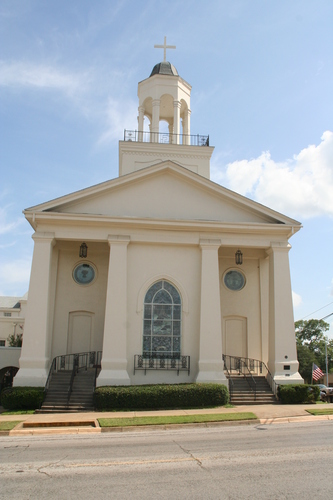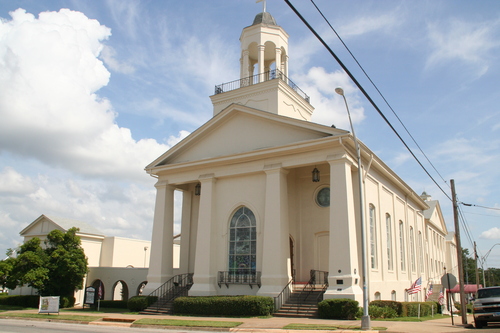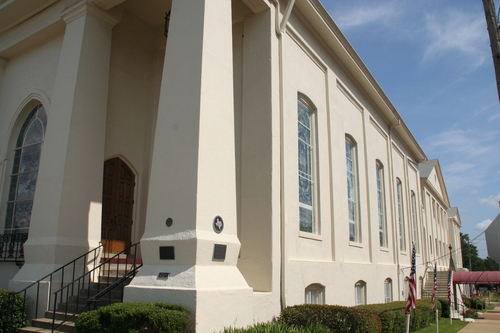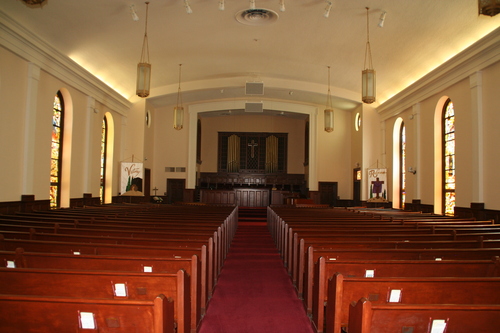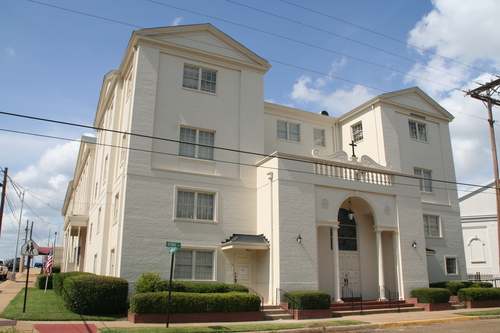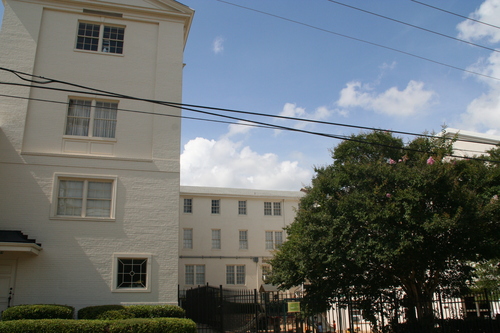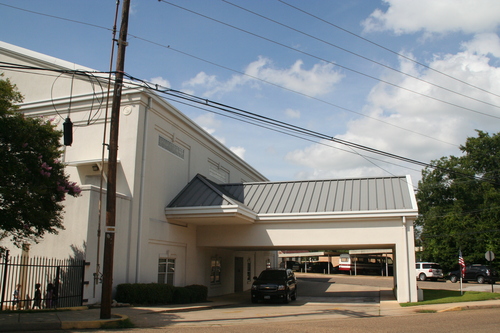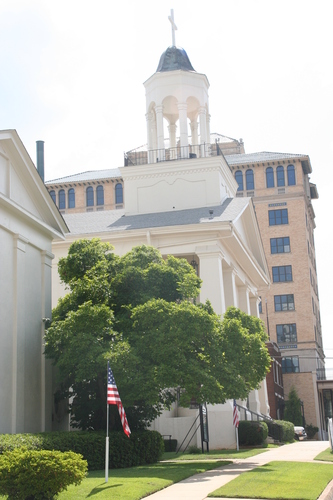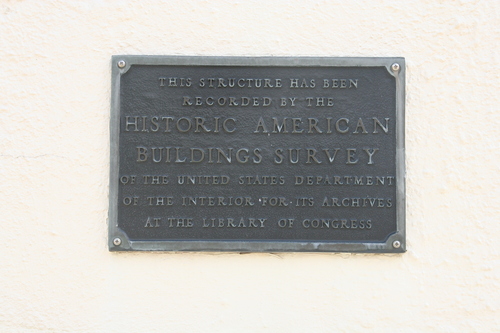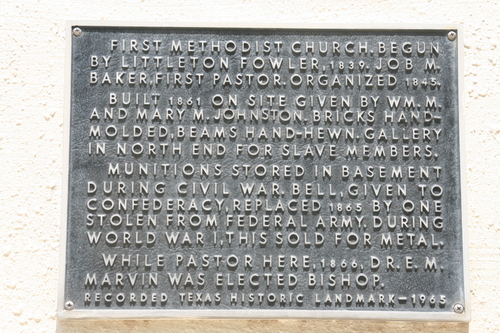300 E. Houston, Marshall
Sanborn Maps:
- Marshall 1885, Sheet 2, Block 9, Lot 325
- Marshall 1889, Sheet 2, Block 9, Lot 325
- Marshall 1894, Sheet 2, Block 9, Lot 325
- Marshall 1899, Sheet 11, Block 9, Lot 302
- Marshall 1904, Sheet 11, Block 9, Lot 302
- Marshall 1909, Sheet 15, Block 9, Lot 302
- Marshall 1915, Sheet 15, Block 9, Lot 302
National Register File
First United Methodist Church of Marshall, TX was listed on theNational Register in 2006.TX Historical Marker
First United Methodist Church of Marshall became a TX Historical Marker in 1965.Historical American Building Survey
First United Methodist Church of Marshall was recorded in the Historic American Buildings Survey in 1936.Architectural Survey
• Description: The 1861 First Methodist Church is a Greek Revival brick-stucco building; with a gabled roof containing five-bay naves with a square-columned tetra style front portico. Many additions have been built on throughout the years.
• Significance: The First Methodist Church is one of the few monumentally scaled Greek revival church architectures in Texas. The building has been part of many historical events: ammunitions were stored within basement during Civil War and the first church bell was given to Confederacy and was replaced 1865 by one stolen from the Federal Army. The sanctuary was also a meeting place for the leaders of the south during the Civil War.
Historical Background
Arriving in Marshall in 1839, Dr. Job M. Baker was the first Methodist preacher in Harrison County. Shortly after his arrival, he and his family had to take sanctuary in Fort Crawford in Hallsville due to the Cherokee War. During their stay within the Fort, Dr. Baker began preaching sermons, and the Methodist community began to grow. Between 1845 and 1851, the Methodist congregation met within the Tarleton School house to worship until 1853 when the church purchased their first building. (Carol Morris Little, Historic Harrison County As Preserved Through Official Texas Historical Markers). Construction on the present location began in 1860 and was completed in 1861. In 1862, Confederate President Jefferson Davis convened a series of annual conferences of governors from the Trans Mississippi states. The first conference, to discuss organization, defense, and administration was held at First Methodist. First United Methodist soon thereafter became part of the Trans-Mississippi Department logistics complex and held Confederate supplies and ammunition within the basement.
Due to growth within the congregation, many alterations and additions have been made on numerous occasions throughout the years. Each addition was designed to complement the structure's architectural style, which helped maintain a unified design. Large stain glass windows were placed in the nave bays in 1901 and in 1949 the most important window was removed from the south wall and installed between the central two columns of the portico forming a vestibule. The interior has been expanded and remodeled, with new ceilings, woodwork, and fixtures. Major additions to the south occurred in 1927, 1949, and 1958 to house educational and administrative functions. These renovations were made with materials and a design to maintain the character of the original sanctuary.
In 1882 a balcony originally intended for slave use was removed and the ceiling over the nave was arched and frescoed. In 1899, a pressed metal ceiling and chandeliers were installed, and structural improvements were made to the foundations replacing brick piers with metal columns. Eleven stained glass windows were installed between 1901 and 1903. In 1927 a classroom addition was attached to the south end of the church while yet another second major expansion occurred in 1949 with the addition of a new wing to the east containing class rooms and a gymnasium. The addition formed a U-shaped courtyard with the original church. The sanctuary was enlarged and remodeled at the same time, and the ceiling was raised and arched with new lighting and a steeple was added. Although First Methodist has undergone many changes, the original north façade retains much of the original design.
The style chosen reflects the popularity and persistence of Greek Revival forms in mid-nineteenth century Texas, which remains prominent still to this day. The congregation continues to meet every Sunday, and provides many outreach programs for the community.
Pastors of First Methodist Church
